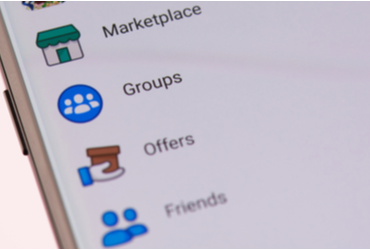With the seemingly unstoppable growth of social media sites across the world, it is clear that a strong online marketing strategy for businesses is extremely important. Facebook continues to dominate this sector, having 901 million active monthly users. Recent changes to Facebook’s page layout and the introduction of the ‘timeline’ means that many companies have had to update their pages accordingly, and use new methods to try to attract users. However, with Facebook’s dominance, it could be easy to forget the importance of its main rival, Twitter. Twitter continues to flourish in this field, and has different benefits for marketers when viewed with its competitors.
The Growth of Social Media Promotion – Why?
Although not considered a traditional marketing form, social media can provide a variety of opportunities for companies to promote their brand and sell their product. With 62% of adults now using social media platforms [2], an advertising or promotional campaign has the potential to reach a large online audience.
Through social media, companies can use various built-in advertising platforms, which respond to user preferences and interests on the site to target potential customers more effectively. Social media also allows your brand to interact with its customer base, allowing users to ‘follow’ or ‘like’ your content. This activity is then distributed across a user’s friend network, potentially creating a ‘domino effect’ of interest in the company. Bearing this in mind, it is no surprise that the latest forecast from BIA/Kelsey predicts total social media advertising revenues will more than double in the next four years, jumping from $4.8 billion to $9.8 billion by 2016 [3].
Facebook – Enough on its Own?
Facebook still provides businesses with a strong base from which to advertise their content. Their integrated ‘Facebook ads’ system, which can tap into user preferences and interests in order to target those most likely to buy, mean that many companies have seen their sales increase through Facebook marketing. Also, many companies have utilised the new Facebook timeline as a way to chart the history of the company, and thus interest users in their brand.
However, a company too reliant on Facebook as its sole social media marketing tool could miss out on other potential consumer interest. Recent trends seem to indicate that companies are increasingly looking elsewhere for potential customers, as rival sites like Twitter continue to grow. The eMarketer recently revised its forecast for Facebook’s 2012 advertising revenues, bringing it down from $6.1 billion to $5.06 billion, or 17% lower [1]. Furthermore, there are concerns over the popularity of Facebook advertising, with only 3% clicking on Facebook ads regularly.[2]

Twitter’s Potential
Bearing this in mind, it would seem that there is considerable justification for a company broadening its social media presence beyond Facebook. Twitter, as the main rival to Facebook, provides a great opportunity for marketing and promotion.
Recent statistics show the potential of Twitter and its growing importance in this field:
- Twitter is growing at a rate of 11 accounts per second
- 2 out of 3 social media users believe Twitter influences purchases
- $259 million is Twitter’s projected ad revenue in 2012
- 40% of Twitter users regularly search for products via Twitter
- 12% of consumers have purchased a product online because of info they found on Twitter [6]
Twitter provides an integrated paid advertising service. This allows a company to become more visible around the site.
The key to social media as a marketing tool is its value: establishing an account is free, posting to your audience is free, and communicating with your customers is free. Twitter is a great tool for all of these, with its simple, clean interface and focus on short, informative posting. A company which utilises Twitter regularly to update and communicate with the customer base at little cost to them should easily see a return on their investment (taking into consideration the cost of someone to manage it of course!)
It is important to note that the social networking world is dominated by more sites than simply Facebook and Twitter. For example, the continued rise of both LinkedIn and Google+ should not be ignored, and these can equally be seen to have different potential markets for any business. Therefore, if you are a company wishing to gain as wide a potential customer base as possible, you should look to tap into as many social media markets as you can.
Furthermore, which social networking site is best for your brand will be dependent on your target market. For example, if your business is aimed at other professionals, you may choose to focus your efforts on LinkedIn, whereas Facebook and Twitter may be more apt for a teenage market. Despite this, it should be noted that the business potential of all these sites is not only already considerable, but rapidly growing. Thus, the sooner businesses adapt to this flourishing, diverse, and continually changing market, the better!


